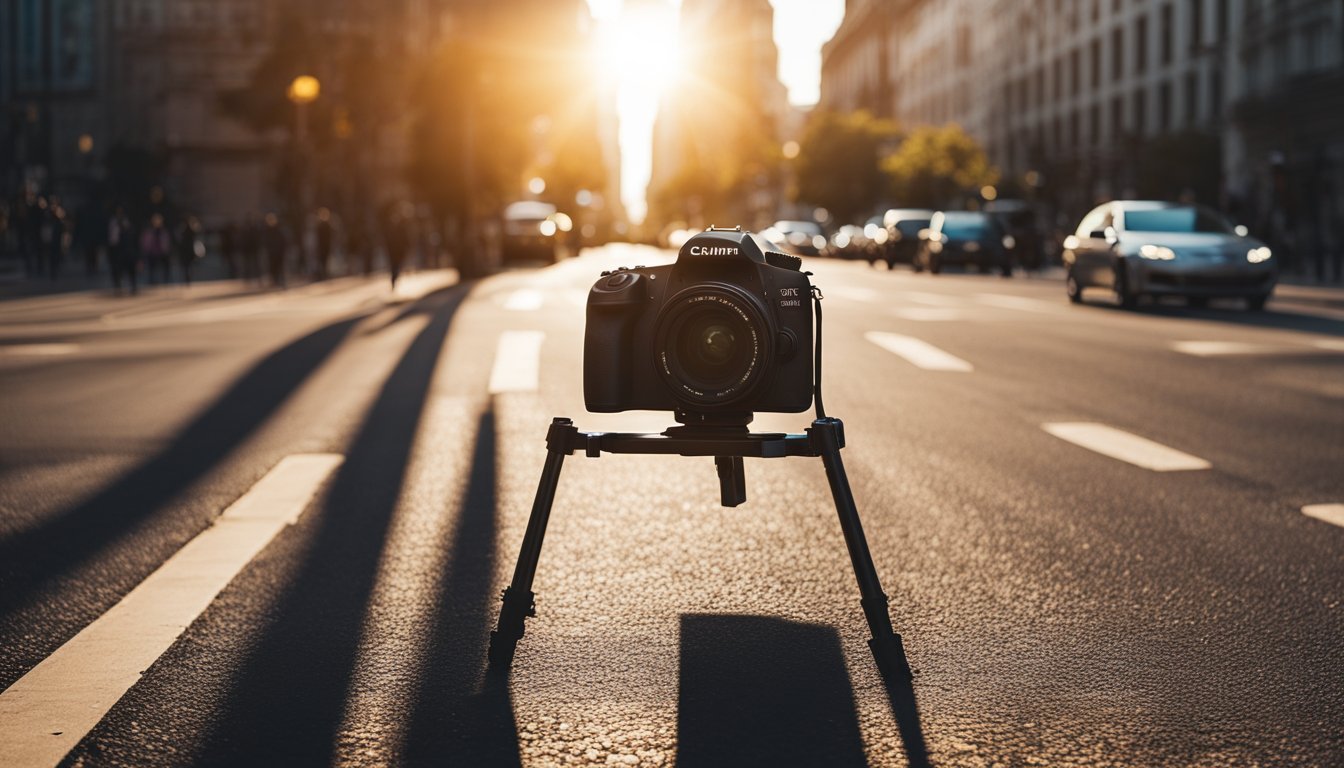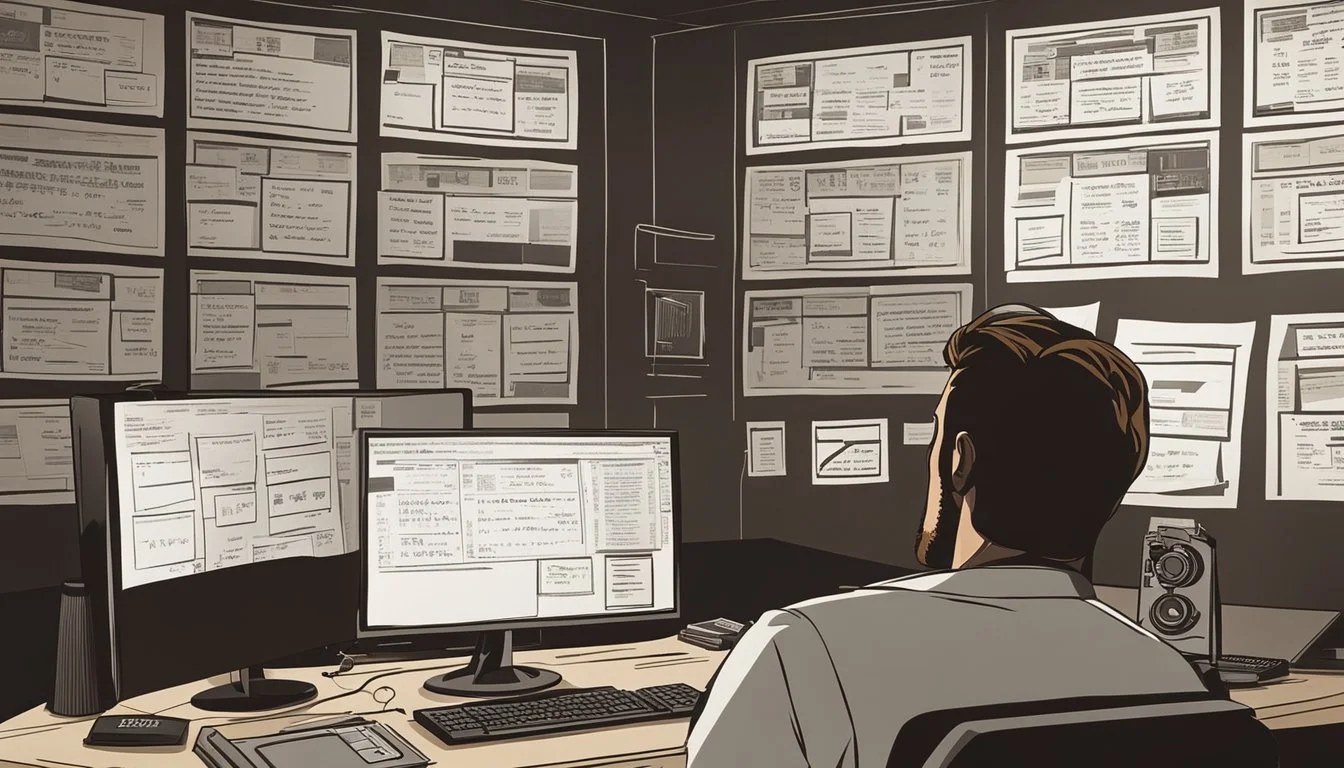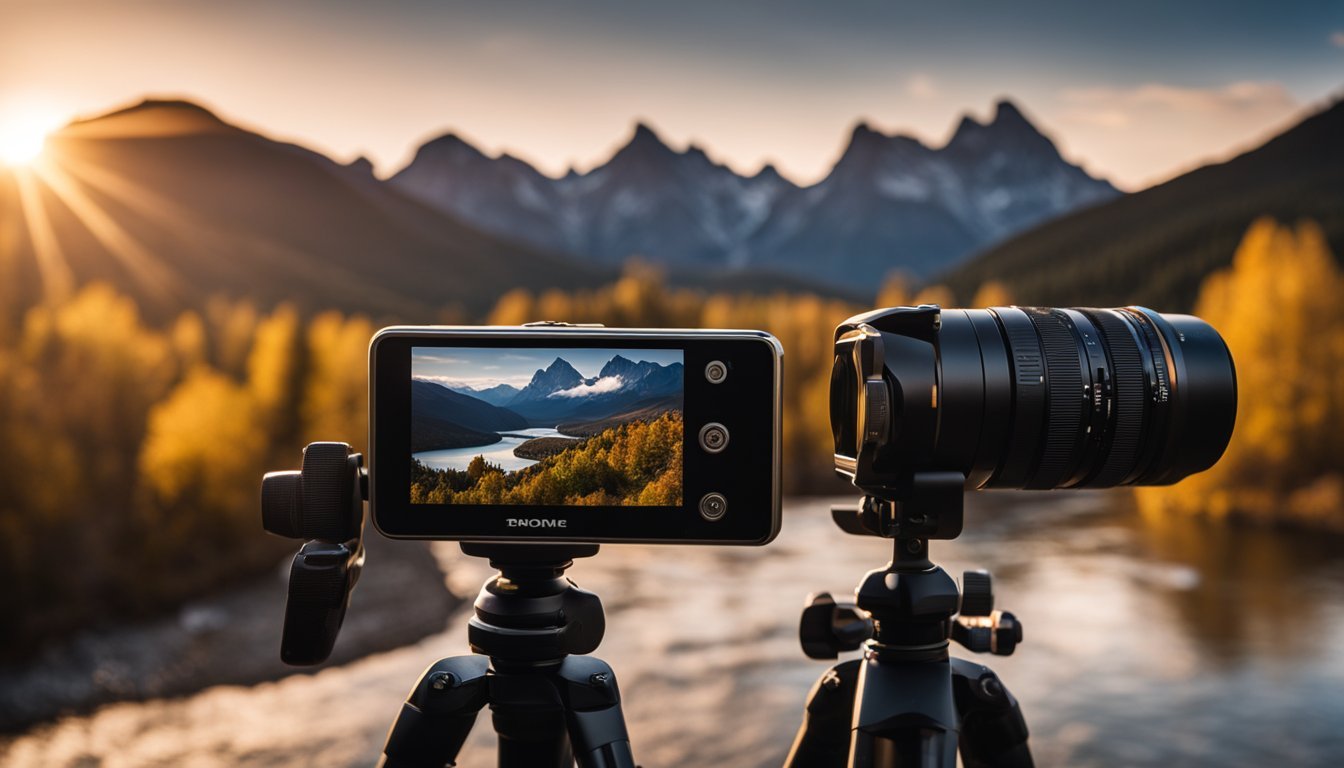The Art of the Documentary Short
Crafting Impactful Stories in Under 40 Minutes
Creating a documentary short can be a challenging yet rewarding endeavor. These films, typically running under 40 minutes, are a unique genre that allow filmmakers to deliver powerful, concise stories without the need for extensive runtime. They offer the opportunity to capture and convey impactful narratives in a way that engages viewers quickly and effectively.
Visual storytelling techniques play a crucial role in the success of documentary shorts. For instance, employing photos and archival footage can enhance the depth of a story, providing visual context that complements the narrative. This method is exemplified by filmmakers like Ken Burns, who masterfully use images to weave together historical tales.
Documentary shorts can draw inspiration from a variety of sources. "Copycat" is a notable example, crafted without a camera and relying on existing genre footage and a single interview. This innovative approach demonstrates the flexibility and creativity inherent in short documentaries, showcasing how powerful stories can be told with limited resources.
Defining the Documentary Short
Documentary shorts, running under 40 minutes, hold a unique position in the film world, combining brevity with depth to present powerful stories effectively. This section explores their historical evolution and defining characteristics.
Historical Evolution
Short documentaries have evolved significantly since the inception of moving pictures. Initially, they served as newsreels and educational films in the early 20th century.
With advancements in technology, filmmakers began experimenting with more personal and artistic stories in a condensed format.
The development of portable cameras and digital editing tools allowed for greater flexibility and innovation. Film festivals, like Sundance and Tribeca, started to recognize and honor short documentaries, giving them greater visibility and legitimacy.
Today's short documentaries showcase diverse subjects, styles, and approaches, continually expanding the boundaries of the genre.
Characteristics of Short Documentaries
Short documentaries typically focus on a single topic or event, offering a concentrated examination within a limited timeframe. They are known for their concise storytelling, often delivering a compelling narrative with emotional impact.
Strong visual and auditory elements are crucial; filmmakers use these tools to engage viewers quickly.
Economy of time demands that every shot, interview, and piece of footage serves a clear purpose.
Moreover, short documentaries thrive on innovative techniques, from animation to archival footage, ensuring the story's essence is captured authentically and powerfully. This genre's ability to distill complex subjects into a brief yet insightful experience is what sets it apart.
Pre-Production Essentials
Creating a powerful documentary short requires thorough preparation in concept development, detailed research, securing funding, and selecting the right people and locations.
Concept Development
Developing a compelling concept is the foundation of any successful documentary short. Filmmakers need to identify a unique and engaging story that can be told within the constraints of a short format. This involves brainstorming ideas, identifying key themes, and considering the film's potential impact on the audience.
Key steps include:
Defining the core message.
Establishing the narrative structure.
Setting clear objectives for what the film aims to achieve.
Research and Scripting
Once a concept is established, in-depth research is crucial. This phase involves gathering information about the subject, verifying facts, and obtaining archival footage or photos. Research not only bolsters the story's credibility but also informs the scripting process.
Essential tasks:
Conducting interviews with subject matter experts.
Reviewing existing literature and media.
Developing a detailed script or outline that guides the production process.
Funding and Budgeting
Securing funds and managing the budget are pivotal for bringing the documentary short to life. Filmmakers must identify potential funding sources and create a comprehensive budget plan that covers all aspects of production, from equipment rental to post-production.
Important considerations:
Finding funding: Seek grants, sponsorships, or crowdfunding.
Budgeting: Include costs for travel, equipment, crew salaries, and post-production.
Allocating resources: Ensure efficient use of the allocated budget.
Casting and Location Scouting
Selecting the right subjects and filming locations significantly enhances the documentary's authenticity and appeal. Casting involves choosing participants who can provide genuine and compelling insights, while location scouting ensures that settings are visually and contextually relevant.
Steps involved:
Interviewing potential cast members to find those who embody the film's spirit.
Scouting locations that align with the narrative.
Obtaining necessary permits and ensuring logistical feasibility for shooting.
Production Techniques
Effective production techniques are essential to crafting a compelling documentary short. The following subsections examine aspects crucial for creating an engaging, high-impact documentary that resonates with audiences.
Camera Work and Cinematography
Camera work and cinematography are pivotal in setting the tone and visual style of a documentary. Filmmakers employ various techniques, such as close-ups to capture emotional nuances and wide shots to establish context. Using a combination of static shots and dynamic movements, such as panning or tracking shots, adds visual variety.
Lighting is another crucial element. Natural lighting is often preferred for its authenticity, though controlled lighting setups can enhance specific scenes. Documentary filmmakers must also be adept at working under various lighting conditions to maintain visual consistency and quality.
Sound Recording
Quality sound recording is as important as the visual component. Clear, crisp audio ensures that the audience can fully engage with the content. Utilizing high-quality microphones, such as shotgun mics for directional sound and lavalier mics for interviews, is essential.
Ambient sound, or background noise, can add realism and depth to a scene. It’s important to capture these sounds separately and mix them carefully during post-production to create a balanced audio landscape. Filmmakers should also be mindful of wind noise and other unwanted sounds that can detract from the viewing experience.
Interviewing Subjects
Conducting effective interviews is central to a documentary's narrative. Filmmakers should prepare thoroughly by researching their subjects and crafting thoughtful questions. The goal is to elicit authentic, engaging responses that advance the story.
Establishing rapport with interviewees helps to create a comfortable environment, encouraging them to share more openly. Filmmakers must also be adept at active listening and follow-up questioning to dig deeper into key topics. Attention to framing and composition during interviews ensures a visually appealing and professional look.
Capturing B-Roll
B-Roll footage enhances storytelling by providing visual context and supporting the narrative. It includes supplementary footage that illustrates the primary content, such as cutaways to relevant activities, locations, or objects mentioned in interviews.
Effective B-Roll is purposeful and visually interesting. Filmmakers should plan their B-Roll shots in advance but remain flexible to capture unexpected moments. Variations in shot types and angles, such as close-ups, wide shots, and creative perspectives, add richness and depth to the documentary.
Production techniques, when employed skillfully, contribute to the authenticity and impact of documentary shorts. Each component, from camera work to B-Roll, plays a distinct role in bringing true stories to life within a concise format.
Post-Production Workflow
The post-production workflow for documentary shorts is crucial for refining the narrative and ensuring the final product is polished and engaging. This involves careful editing, structuring the narrative, adding music and sound design, and applying color correction.
Editing
Editing is the backbone of documentary film post-production. Raw footage is reviewed and assembled to create a coherent story. Editors collaborate closely with directors to select the best takes, remove unnecessary elements, and ensure a natural flow. The goal is to maintain audience engagement while accurately reflecting the subjects’ experiences.
Narrative Structure
Narrative structure is fundamental in shaping how the story is presented. Organizing footage chronologically or thematically can significantly impact the viewer's understanding. Editors optimize the structure to highlight key moments, build tension, or emphasize important themes. Clarity and pacing are critical components in delivering a compelling narrative.
Music and Sound Design
Music and sound design enhance emotional resonance and immersion. Sound designers add background scores, foley effects, and voiceovers that complement the visual elements. Music can underscore the documentary's tone and emotion, while sound effects can highlight specific actions or moments. This multi-layered approach enriches the storytelling experience.
Color Correction and Finishing Touches
Color correction and finishing touches ensure visual consistency and aesthetic appeal. Colorists adjust hues, contrast, and brightness to achieve a unified look. This process enhances mood and tone, making the documentary visually cohesive. Final touches might include adding titles, credits, and any necessary visual effects to polish the final product.
Storytelling Dynamics
Documentary shorts must captivate audiences quickly, convey their core messages effectively, and use tension and release to maintain engagement. Mastering these storytelling dynamics ensures the documentary is both impactful and memorable.
Engaging the Audience
Capturing the viewer’s attention within the first few moments is critical. Documentaries often use compelling visuals, intriguing questions, or striking statistics to hook the audience immediately.
Incorporating a strong narrative arc, vivid characters, and changing the pace can keep viewers invested. Quick cuts, varied shot types, and music can be used to maintain visual and auditory interest.
Conveying a Message
Central messages must be clear and articulated efficiently. Creators should focus on core themes, avoiding unnecessary complexity. Using concise interviews, clear voiceovers, and strategically placed text can help drive the message home.
Examples:
Explicit statements about the documentary’s purpose
Focused interviews and testimonials
Relevant facts and figures
Building Tension and Release
A well-crafted documentary short builds tension organically and offers moments of release. This can be achieved through storytelling techniques such as cliffhangers, carefully timed revelations, and contrasting sequences.
Alternating between intense and calm scenes can create a rhythm that keeps the audience on edge while also providing intermittent relief. This dynamic engages viewers emotionally and makes the story more compelling.
Distribution Strategies
Effective distribution of documentary shorts involves leveraging film festivals, online platforms, and educational outreach to reach diverse audiences.
Film Festivals and Competitions
Film festivals and competitions offer a vital avenue for gaining visibility. These events attract industry professionals, critics, and enthusiastic audiences.
Key festivals like Sundance, Tribeca, and Hot Docs provide platforms for showcasing.
Winning or being selected can enhance credibility and open doors to further opportunities. Many festivals offer awards or grants, adding financial benefits.
Submitting to multiple festivals increases the chance of selection. It's essential to tailor submissions to festivals aligned with the documentary's themes and target audience to maximize exposure and impact.
Online Platforms
Online platforms have revolutionized documentary distribution, making content accessible to a global audience. Platforms include YouTube, Vimeo, and Short of the Week.
They offer a cost-effective way to reach viewers without geographical constraints.
Developing a digital marketing strategy, including social media promotion and targeted advertising, can amplify reach. Partnerships with streaming services like Netflix or Amazon Prime can also provide lucrative opportunities, though these often require a distributor or sales agent.
Crowdfunding sites like Kickstarter can simultaneously fund and distribute content by engaging potential viewers early in the process.
Educational Outreach
Educational outreach involves collaborating with schools, universities, and educational organizations. Documentary shorts can be integrated into curricula to stimulate discussion and learning.
Creating study guides or lesson plans enhances the educational value, making the documentary a more attractive offering for educational institutions.
Partnering with nonprofits or advocacy groups can extend reach and relevance, especially for documentaries addressing social issues. Hosting screening events followed by Q&A sessions can stimulate deeper engagement and provide additional platforms for distribution.
Educational licenses can be sold to institutions, creating a revenue stream while ensuring sustained viewership.
Ethical Considerations
Documentary short filmmakers must navigate numerous ethical considerations. First, bias requires attention. Bias means favoring one perspective without acknowledging others, and it can compromise the integrity of the documentary. Being aware of and managing bias is crucial.
Filmmakers need to respect the dignity of their subjects. This includes informed consent. Subjects should fully understand the implications of their participation before filming begins. This ensures their willingness and comfort in being part of the project.
Privacy and confidentiality are also essential. Filmmakers are responsible for protecting sensitive information about their subjects. Any breach can cause significant personal or professional harm.
Accuracy in portrayal is fundamental. Filmmakers must present events and people fairly. Misrepresentation can damage reputations and undermine the documentary's credibility. Thorough research before filming helps avoid such pitfalls.
Funding sources can influence the direction and content of the documentary. Filmmakers should be transparent about these influences and ensure they do not compromise ethical storytelling. Balancing this aspect is crucial for maintaining trust with the audience.
Lastly, documentarians juggle responsibilities to their subjects, audience, and funders. They must carefully weigh these sometimes competing obligations while striving to deliver an honest and compelling story in a short timeframe.
Measuring Impact and Success
Documentary shorts have a unique power to convey messages succinctly. Measuring their impact requires a multifaceted approach.
Viewer Engagement
Evaluating the number of views, shares, and likes can provide initial insights into a documentary short's reach. Audience reactions and comments are also indicative of the film’s resonance.
Critical Acclaim
Positive reviews from critics and inclusion in film festivals can elevate a short film’s status. Awards and accolades often validate its success.
Social Change Metrics
Documentary shorts aiming for social change might be assessed based on their ability to inspire action. Metrics such as increased donations, volunteer sign-ups, or policy changes linked to the film can be measured.
Direct Feedback
Conducting surveys and interviews with viewers can reveal the documentary's emotional and cognitive impact. This qualitative data is invaluable for understanding deeper effects.
Case Studies
Specific case studies showcasing the real-world impact of documentary shorts can offer concrete examples of success. They illustrate the tangible changes inspired by the film.
Partner Collaborations
Partnerships with NGOs and advocacy groups can amplify a documentary short’s reach and impact. Tracking these collaborations and their outcomes provides an additional layer of success measurement.
Using these methods, filmmakers can comprehensively evaluate the success and impact of their documentary shorts, ensuring they meet their intended goals.
Case Studies: Award-winning Shorts
Examining award-winning documentary shorts unveils the art of impactful storytelling in limited timeframes.
The Last Repair Shop directed by Ben Proudfoot offers a compelling example. The film, made in collaboration with composer Kris Bowers, highlights a longstanding institution's influence on education within the Los Angeles Unified School District. Proudfoot, a seasoned filmmaker, layers narratives to provide a rich viewing experience.
Sophia Nahli Allison’s work stands as another significant case. Her film underscores complex social issues through intimate portrayals, showcasing her mastery in creating emotional depth. Allison’s documentaries often receive accolades for their nuanced and sensitive approach.
Lastly, Vincent René-Lortie’s short film captures a character's poignant journey. In just 30 minutes, he conveys a spectrum of human emotions, earning critical acclaim. His ability to infuse desperation and joy in a compact form demonstrates the power of short documentaries.
These filmmakers illustrate that brevity can enhance storytelling by focusing on essential moments and emotions.
Future Perspectives
The future of documentary shorts is evolving with technological advancements. Virtual Reality (VR) and Augmented Reality (AR) are opening new possibilities for immersive storytelling, allowing audiences to experience stories in unique and engaging ways.
Increased accessibility to high-quality cameras and editing software enables more filmmakers to create impactful documentary shorts. This democratization of tools provides opportunities for diverse voices to be heard.
Streaming platforms like Netflix and Amazon Prime are investing in short documentaries, creating broader distribution channels. This allows documentary shorts to reach larger global audiences.
Environmental and social issues are anticipated to remain popular themes. The concise nature of short documentaries makes them powerful tools for raising awareness and sparking conversation.
Collaborative projects and cross-disciplinary approaches are emerging trends. Filmmakers joining forces with activists, scientists, and artists can bring richer, multifaceted narratives to the screen.
The integration of Artificial Intelligence (AI) in editing and production is expected to streamline processes. AI can help in sorting through vast amounts of footage, identifying key moments, and enhancing storytelling efficiency.
With the rise of mobile journalism, even smartphones are becoming viable tools for producing documentary shorts. This convenience allows for spontaneous and on-the-ground storytelling.
Micro-documentaries, typically under 10 minutes, are gaining traction. They cater to audiences with shorter attention spans while still delivering powerful messages.
The future of documentary shorts is vibrant and dynamic. Technological innovations and shifting audience preferences are poised to expand the boundaries of this compelling film genre.







